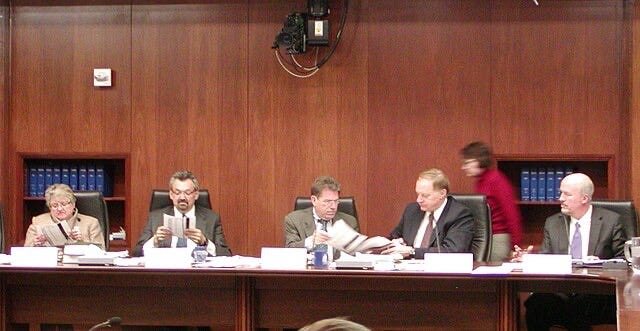
You cast your ballot. The media has announced the winners. Preparations are underway for the presidential inauguration. New members of Congress have gone to DC for orientation.
So, the election is over, right?
Not exactly.
Some places have super close elections. The U.S. Senate election in Pennsylvania is undergoing a recount, with accompanying litigation. Only 102 votes currently separate the candidates in a U.S. House race in California. An election for North Carolina Supreme Court justice currently has a margin of just 623 votes out of 5.5 million cast, with more ballots still to count. (You just never know when your vote will make the difference.)
And outside of those tight races, election officials are busy at work counting ballots, verifying the results, engaging in the official canvass, and conducting post-election audits. It’s an intricate system that ensures accuracy in the results.
How does the election progress from Election Day to certification? It starts with the detailed canvassing of results.
Though it shares a name, an election official’s canvass is not like a campaign’s canvass. An election canvass is essentially a review of an election’s paper trail. It lets officials verify that they administered the elections properly and that the final results are accurate. Though the exact format for conducting an election canvass varies by location, steps in every jurisdiction are comprehensive: in a canvass, officials tally straggling absentee ballots, review provisional ballots to determine whether they should count, compare and confirm their jurisdiction’s polling records and poll books, and check the handling records for equipment.
In most states, this process isn’t immediate: though there are some outliers, it typically takes weeks to complete a canvass. It’s easy to understand why. Both local and state boards conduct their own canvasses prior to election certification. At the local level, canvassing boards track and compare every voting precinct’s number of registered voters and the number of votes cast. While not a herculean task, local canvassing can take some time. For example, Kentucky’s Jefferson County—the largest county in the state—has hundreds of voting precincts and officials must check and compile the data from each one.
Once local canvassing is finished, the local board certifies the results and sends the data to the state’s board of elections to compile the statewide results. Only after completing these canvasses do election administrators certify the results of the election. The deadline for a state’s election certification, like canvassing deadlines, varies by state and by race, but all eventually end with that state’s chief election authority certifying that its election results are complete and accurate. These steps are why the election results are not actually final until certification.
Canvasses aren’t the only tool states use for verifying their election results. All states except Alabama conduct post-election audits as another layer of security. They begin the auditing process around the time they start their canvassing efforts. States use many different types of audits, but they generally involve sampling paper ballots and determining whether their machine tabulations match up. The “gold standard” is known as a risk-limiting audit; Jennifer Morrell of The Elections Group told us about risk-limiting audits in an episode of the Democracy Optimist podcast (listen here). Elections neither end on Election Day nor when the media “calls” the races. Election officials leave no stone unturned before verifying the results. As our elections have evolved to reflect greater security concerns, so too have our post-election processes.
Some people have asked me if I’m still a “democracy optimist” even after the results of the election, when the country elected a candidate as president despite his instigation of an insurrection after he lost the last election. My unequivocal answer is yes. First, democracy worked, in that the people were able to express their preferences in a free and fair manner. The candidate who received the most votes in enough states to constitute an electoral college majority will become the next president. Election officials were once again the heroes of democracy in administering an election with very few hiccups. Second, optimism does not mean that I think all is perfect; it’s about what is possible. And I still firmly believe that we can engage people to believe in the promise of democracy. So, while you enjoy some turkey, stuffing, and apple pie over Thanksgiving and move into the holiday season, be thankful that we still have a democracy where the people’s voice reigns supreme. And let’s all double down in our commitment to protecting and improving that democracy for the future.
Thanks again to my research assistant, Jack Bizzell, for his efforts on this project as we sought to inform and engage the public on the vital issues of democracy during the 2024 election season. Prior posts of this substack are available here. All episodes of the Democracy Optimist podcast are available on Apple, Spotify, and online. If there’s a topic you would like us to explore in the future, just drop me an email at joshuadouglas@uky.edu. You can also find me on bluesky at @joshuaadouglas.bsky.social.




